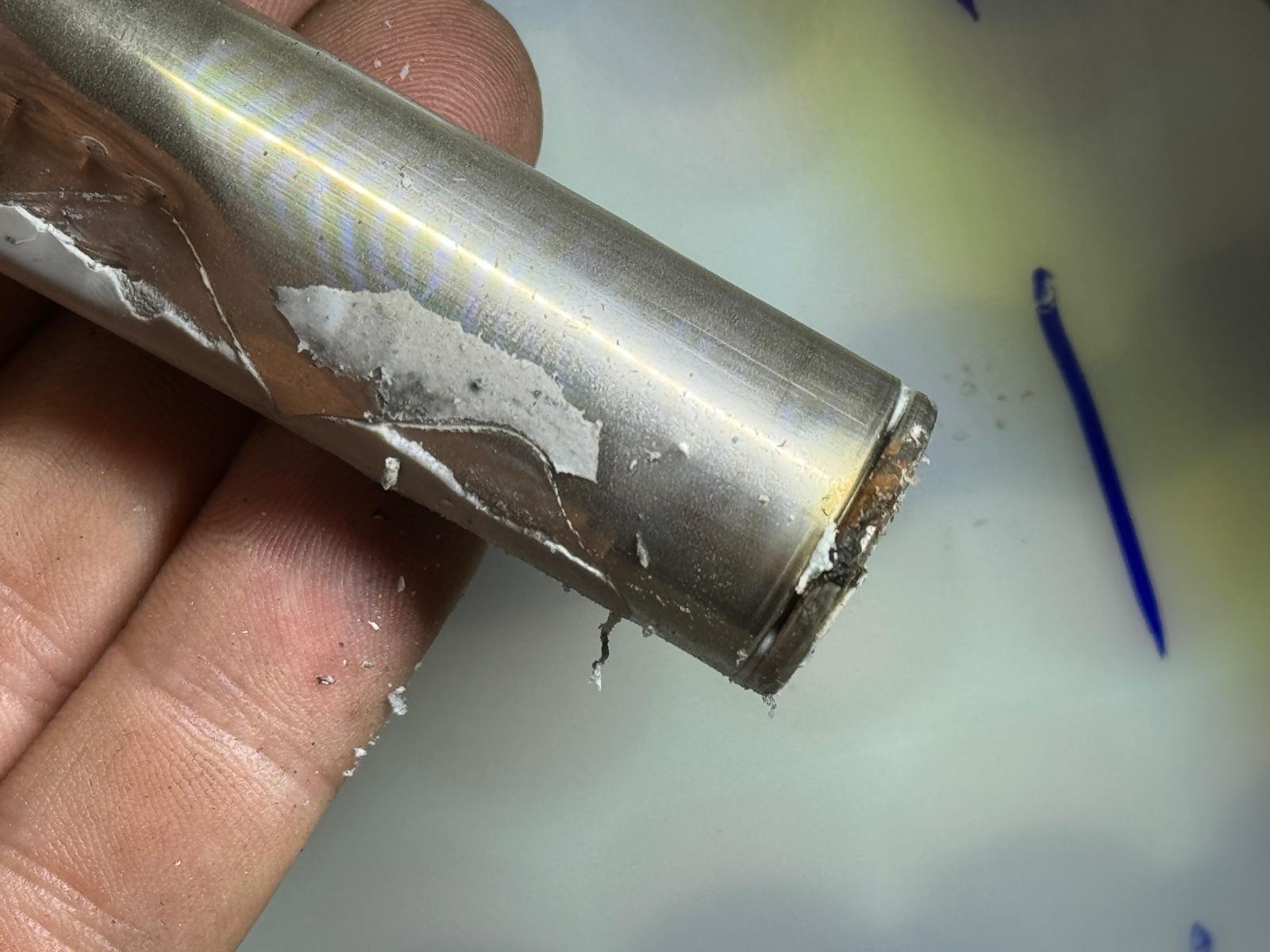
The Model 3 and Model Y vehicles feature one of the most compact and technologically advanced battery systems. In most cases, these systems are repairable at the component level, including the replacement of one or more cylindrical cells—something that was previously considered impossible. However, this is only true if the owner understands the urgency of the issue.
We’ve observed several cases of defective batteries succumbing to moisture ingress or retention within the housing. In many instances, owners have mechanically damaged the battery housing—puncturing it or damaging other parts of the casing. If the repair of the cylindrical cell-based battery systems on the Model 3 or Y is delayed for several months, restoration often becomes impossible.
Why is delay a problem?
The battery consists of 96 cell groups, each containing 31 or more cells in parallel. And if one cell in paraller is damaged, it will damage complete group. Changing all cells in a group is not possible.
One recurring design flaw in the 2170 cylindrical cells is their orientation—all are installed upside down in the modules. The cells are not entirely encapsulated in foam; instead, the thermal gap filler is applied only at the bottom of the cell. Condensation and moisture, which form in conditions of extreme temperature fluctuations, drip down onto the shoulder of the cell, where the – and + terminals are located. This leads to electrolysis, permanent cell damage, and subsequent discharge of the entire group.
The battery housing has also proven insufficiently robust against impacts from road debris or curbs. Deformations at the rear often damage the vent valve, while impacts at the front can crack the entire housing, allowing water to enter directly into the battery system. Aftermarket manufacturers or Tesla itself should consider designing steel reinforcements to protect the front and rear of the housing. Similar issues have been observed with VAG, Mercedes, and Renault batteries, although the Tesla Model S housing has so far demonstrated superior durability.
Vehicles that are frequently charged at DC fast chargers have shown greater resistance to cell oxidation and other moisture-related issues. Rapid heating during DC charging drives out even minimal residual moisture through the “umbrella valve” vents, contributing to improved battery longevity.
If your battery is damaged in any way, it’s highly recommended to perform a “pressure test” to check for leaks. If you encounter imbalance errors, insulation faults, or limited charging capabilities, do not wait weeks to address the issue. Acting promptly significantly increases the chances of saving the battery because this one from picture could not be saved.
Alert: BMS_A066, BMS_A107, BMS_a156
Partnumber: 1104429-00-N
OEM: 9155€ +TAX
EVC: (no SR module on stock)




















Is it possible to have the vehicle inspected by a local service and just in case there is a suspect of leaks book in your facilities?
Yes, it is possible.
Just wanted to comment here that I’ve been following finnish car repair (Kokkolan autohuolto) videos and they claim that while replacing a few broken cells fixes the battery if those got broken because of moisture it means that other not broken cells are likely to have issues in the future too because they built up oxidation in the connectors etc.
Btw they tell the same story with plug-in hybrids and how those become garbage at around 150000km. They do very informative youtube videos (only in finnish) https://youtu.be/I2Pc_kN1Xlc?si=ik0CLqSg2hK3Z8oI
Actually that is not true because we did multiple cell swaps 3 years ago. 0 vehicles returned with new failures. Model 3 is a Taxi which alread made over 100,000km without failure.
1 cell swap is possible and failure doesnt repeat.
https://youtu.be/1-TF5MSDJ6Q?si=v0-5gW9Im4FnQOPd
Are there any aftermarket protection for the front and rear of the housing yet, specific Model 3 Highland SR? You said “If your battery is damaged in any way”, but how can I know if there is a crack in the housing, if the car doesn’t notify me anything? I heard now twice the same thing that the Tesla Model 3 is prone to “moisture ingress”.
I am from Austria and my car is currently 3 months old. I feel like if something happens, I am already too late and currently I only charge on slow AC.
Das Highland müsste doch bereits verbessert sein oder?
Ja, verbessert
Das Highland müsste doch bereits verbessert sein oder?
Wie ist es um die BYD Batterien bestellt? Kann man diese im Model y überhaupt reparieren?
What are the main common indications of a probable cell problem ?
Model 3 LR 2021.
Thanks !